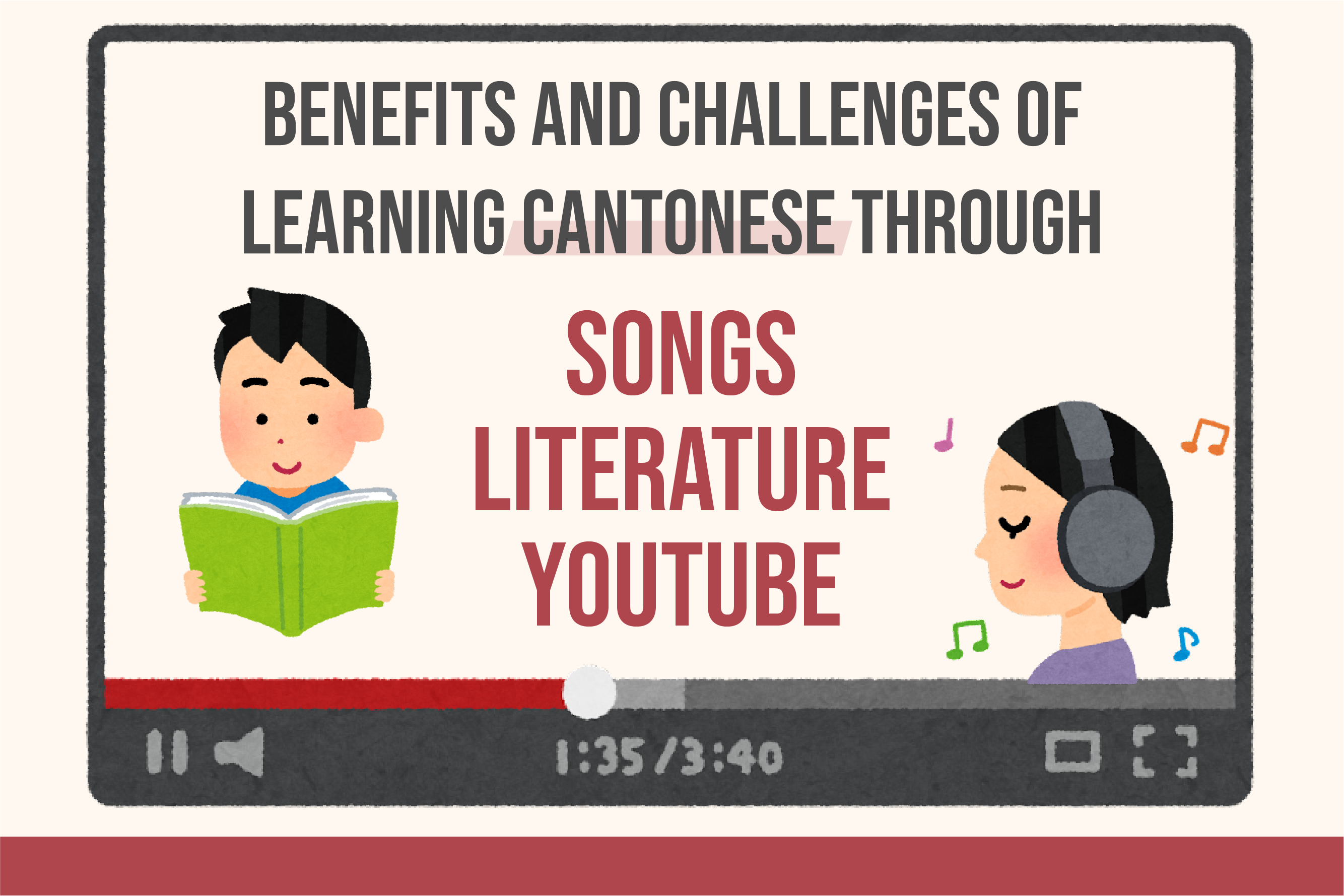This table summarizes the benefits and considerations when learning Cantonese through songs, literature, and YouTube videos.
Benefits | Considerations | |
|---|---|---|
Cantonese Song | Lyrics harmonize with the melody, training the sense of tone | Lyrics are in Modern Written Chinese; Vocabulary may be difficult |
Cantonese Literature | Good for learning Chinese characters, Cantonese grammar and ending particles | Lacks audio; Content may be difficult for beginners |
Cantonese Youtube Channel | Cantonese subtitles, synchronizes with audio; Eeveryday language | Lacks Jyutping; Fast-paced |
Cantonese Songs
Tonal languages don't have fixed tones. Instead, they work like music where tones are relative. This is akin to musical solfège—do, re, mi—which shows how tones relate to each other. Just like how most people can hum 'Happy Birthday' without knowing solfège, asking them to sing using solfège might stump them.
This is exactly why it's not essential to memorize tone numbers. If you merely memorize these numbers without a real grasp of pitch, you'll find yourself constantly calculating tones in your head, which can slow down your speech and exhaust you mentally before you've even finished a sentence—imagine trying to sing 'Happy Birthday' in solfège!
Of course, everyone has their unique learning style, and for some, connecting tone numbers with pitch does wonders. However, mastering tones doesn't necessarily require memorization.
Historically, distinguishing tones played a critical role in accurate pronunciation, akin to the function of the International Phonetic Alphabet in the pre-digital age. Today, with the abundance of online resources offering accurate Cantonese pronunciations, learners would benefit greatly from focusing more on listening and reading aloud.
Using songs to learn Cantonese offers distinct advantages since the lyrics need to harmonize with the melody, making sure the word tones match the musical tones. This alignment can be tricky—If the lyrics don't match the melody, they can sound like completely different words, changing the intended meaning. This makes lyric writing in Cantonese particularly challenging. The challenges of writing Cantonese lyrics are vividly portrayed in the movie The Lyricist Wannabe (填詞L).
Immersing yourself in Cantonese music is a fantastic way to deepen your understanding of tones and become familiar with them without having to memorize tone numbers. Remember, like in any language, songs might bend grammatical rules to fit the rhythm, and lyrics are often written in Modern Written Chinese. When listening, let the melody and tones take center stage, try to connect the tones with the corresponding Chinese characters, and consider grammar and vocabulary as supportive elements.
Cantonese Literature and Articles
Cantonese literature and articles might be a rare find these days, but there are dedicated writers who continue to champion the Cantonese language. One such publication, RESONATE(迴響), compiles a variety of Cantonese articles and stories, celebrating the culture of the language.
Diving into these texts offers Cantonese learners a direct route to mastering the language's unique grammar and expressions, steering clear of the Mandarin influences often found in Chinese literature written in Modern Written Chinese. This approach is especially suitable for visual learners. However, keep in mind: the depth and complexity of these works might be a bit challenging for beginners.
Check this blog out to know more about Written Vernacular Cantonese: "Modern Written Chinese VS Written Vernacular Cantonese"
Cantonese YouTube Channel
Just like Cantonese novels and articles, movies or TV shows with Cantonese subtitles are pretty rare. However, a few YouTube channels, such as 100MOSTHongKong(毛記電視), do provide Cantonese subtitles. These channels are excellent for learning Cantonese vocabulary and enhancing listening skills because the audio syncs with the subtitles and includes plenty of everyday language. Keep in mind that the speech can be fast-paced, and the subtitles usually don't feature Jyutping (Cantonese romanization).
